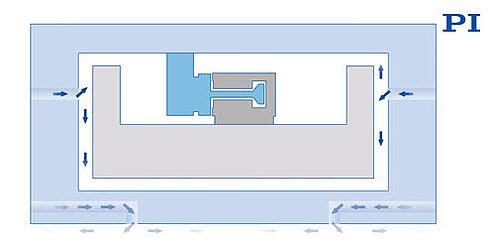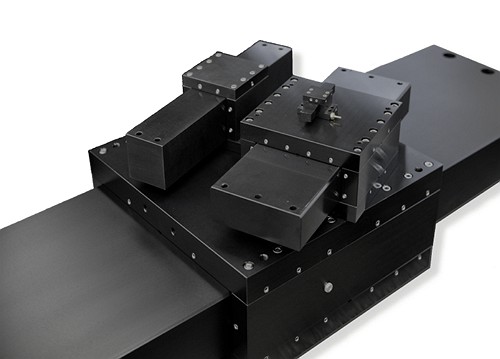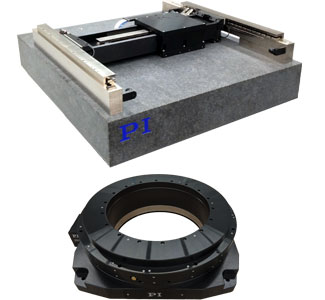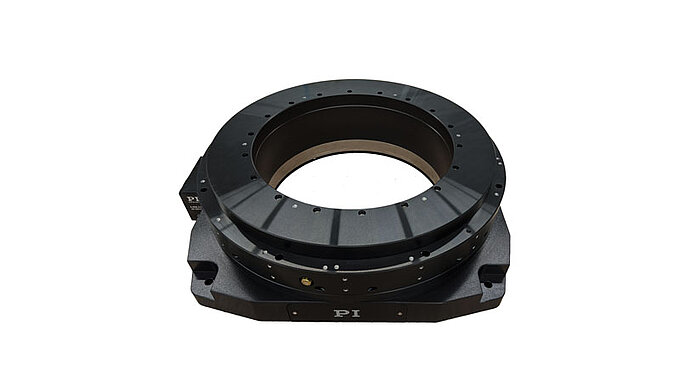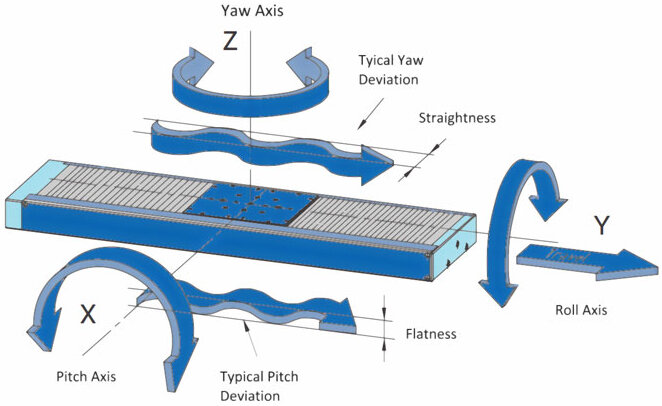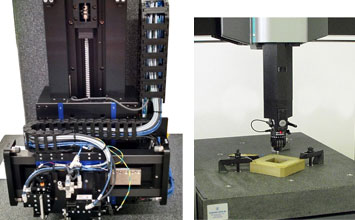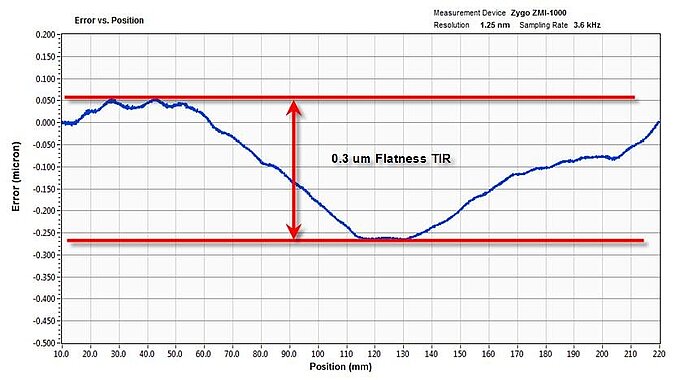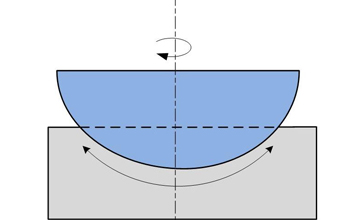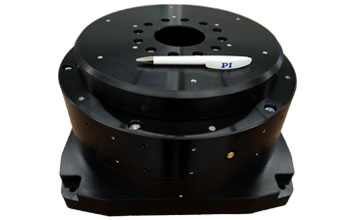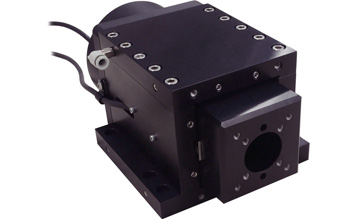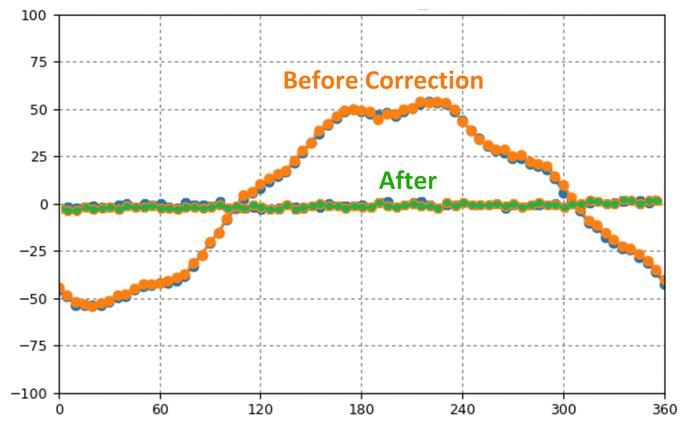Why Use Air Bearings Instead of Mechanical Bearings in Precision Motion Applications
Ultra-High Precision Positioning and Motion Control
Air bearings allow the carriage of a precision positioning stage — whether rotary or linear — to float on a cushion of air, virtually eliminating mechanical contact, and thus minimizing wear, friction, vibration, and hysteresis effects. While many precision motion control applications are adequately served by mechanical bearing guidance, an increasing number of cases demand enhanced precision, angular repeatability, and geometric performance, or involve environments where vibration and sub-micron bearing rumble are intolerable. In these situations, air bearings and air-bearing positioning stages offer a solution.
Air-bearing stages use several preloading methods to maintain stability, stiffness, and precise control of motion by minimizing unwanted movement and ensuring a consistent air film thickness between surfaces. Preloading mechanisms — typically through vacuum, magnetic, or pneumatic methods — counterbalance forces that might otherwise cause the air-bearing stage to lift or shift, ensuring a tight, stable interface with the air film. This stability is crucial for high-precision motion control applications, as it helps prevent unwanted oscillations or vibrations, thereby enhancing accuracy, repeatability, and smoothness in motion control.

Frictionless, Vibrationless High-precision Positioning
A direct-drive motor and high-resolution encoder can position a moving carriage supported by an air bearing to within nanometers in a linear application or within tenths of arc-seconds in rotational applications. The lack of friction and mechanical contact means there is minimal vibration, hysteresis or reversal error, making it highly repeatable and ideal for many inspection and manufacturing operations. Stiction is virtually eliminated, improving resolution capabilities and reducing in-position „hunting“ (limit cycling) and position repeatability can be obtained within a few fundamental encoder counts. Similar precision can be obtained by piezo flexure guided stages, however over much smaller travel ranges. Magnetic levitation is another option.
Velocity Stability and Scanning
The lack of mechanical bearing elements means there is nothing to get in the way of smooth, controlled velocity (stability to better than 0.01%). Experiments and processes like inertial sensor testing, tomography, wafer scanning, and surface profiling require continuous motion at tightly controlled speeds are best served by air-bearing systems.
Very Low Error Motions
Linear air bearing stages have incredibly straight and flat travels, and pitch, roll, and yaw errors can be measured in tenths of arc-seconds. Rotary stages can have tilt (wobble) errors less than 1 arc-second. Additionally, the angular performance of an air bearing is remarkably repeatable. This guarantees optimal part quality and measurement reliability for applications like mirror and optics inspection, semiconductor inspection, and medical device manufacturing. For more information on geometric performance: Read article, “Straightness and Flatness of Air Bearings”
Travel Requirements are Greater Than a Flexure Stage Can Provide
Piezo-driven flexure stages and actuators can satisfy many high-precision positioning applications. However, these designs are usually limited to a few millimeters of travel. Use an air bearing linear stage for travels of 25mm or more. PI manufactures linear air bearings with travels up to a meter, and even greater with a custom design.
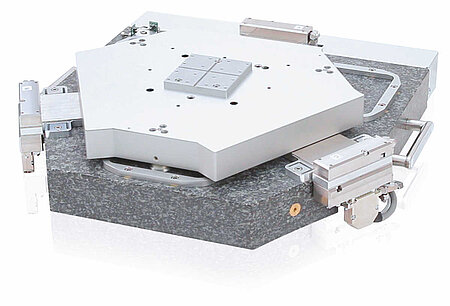
Wobble-free or High Speed Rotary Motion is Needed
Rotary air bearings are exceptionally stiff and can deliver highly precise rotary motion. Radial and axial vibration, and wobble error motions are much smaller than most mechanical bearing solutions can provide, and the rotary motion is very smooth, since there are no roller elements. Rotary positioning stages generally can achieve speeds up to 600 RPM, while air bearing spindles are used in higher speed applications. Rotary bearing designs can be mounted with the plane of the table in either the horizontal (i.e. turntable) or vertical orientations.

Minimal Maintenance
There are no contacting parts to undergo wear and tear, and no regular maintenance procedures to be performed, like lubrication. An air-bearing stage is essentially maintenance-free. Further, the system is highly stable, since there is no wear, the performance characteristics should not change over the life of the system. There is little need for recalibration. Moving cables and hoses are often the only wear items in an air bearing system.
Cleanliness
Because air bearings are wear-free, they generate virtually no particulates that can become airborne. This makes them ideal for cleanroom applications like optics inspection, wafer inspection, bio-pharma research, and flat-panel display inspection. For extremely clean applications, it is recommended that the air bearing operate using 99.9% pure nitrogen.
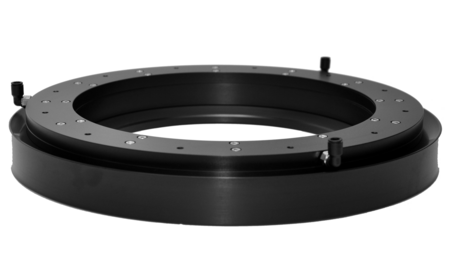
Precise Force Control and Sensing
Air bearings are virtually frictionless, which means when they are coupled with a direct drive motor or voice coil, they are ideal for micro- and nano-Newton force control applications. Such applications can include pick-and place of delicate items, materials testing, and coordinate measuring applications.
WHEN WOULD YOU AVOID AN AIR BEARING FOR YOUR MOTION CONTROL APPLICATION?
Vacuum Environments
While it is not impossible to operate an air bearing in a vacuum, it is challenging. Vacuum applications should generally be avoided and instead use mechanical bearing, mag-lev, or flexure systems.
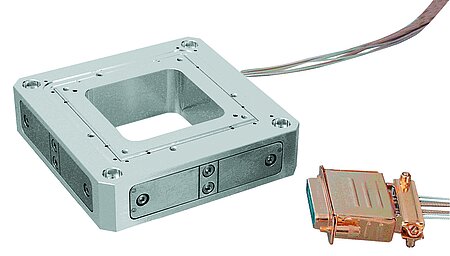
Very Dirty Applications
Air bearings are generally used in clean environments. Applications where heavy amounts of dust, dirt, debris, and fluids are present should generally be avoided.
Pressurized Air or Nitrogen is Not Available
Air bearings require a continuous supply of clean compressed air or nitrogen. If the application does not allow for such a supply to be present, an air bearing cannot be used.
Blog Categories
- Aero-Space
- Air Bearing Stages, Components, Systems
- Astronomy
- Automation, Nano-Automation
- Beamline Instrumentation
- Bio-Medical
- Hexapods
- Imaging & Microscopy
- Laser Machining, Processing
- Linear Actuators
- Linear Motor, Positioning System
- Metrology
- Microscopy
- Motorized Precision Positioners
- Multi-Axis Motion
- Nanopositioning
- Photonics
- Piezo Actuators, Motors
- Piezo Mechanics
- Piezo Transducers / Sensors
- Precision Machining
- Semicon
- Software Tools
- UHV Positioning Stage
- Voice Coil Linear Actuator
- X-Ray Spectroscopy

